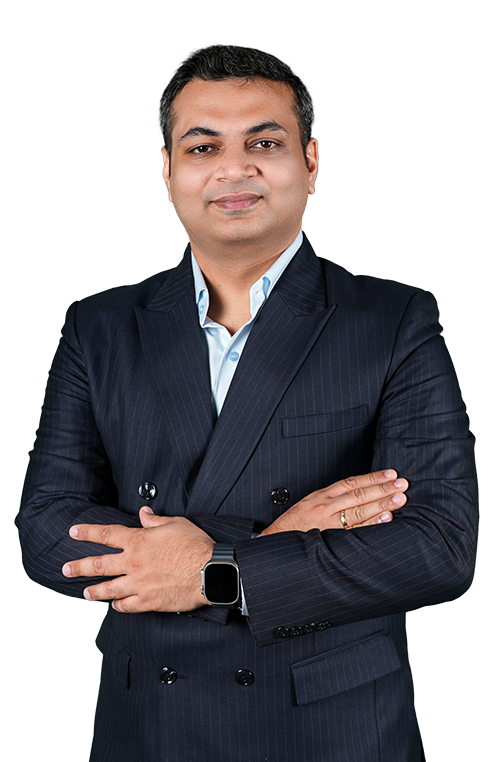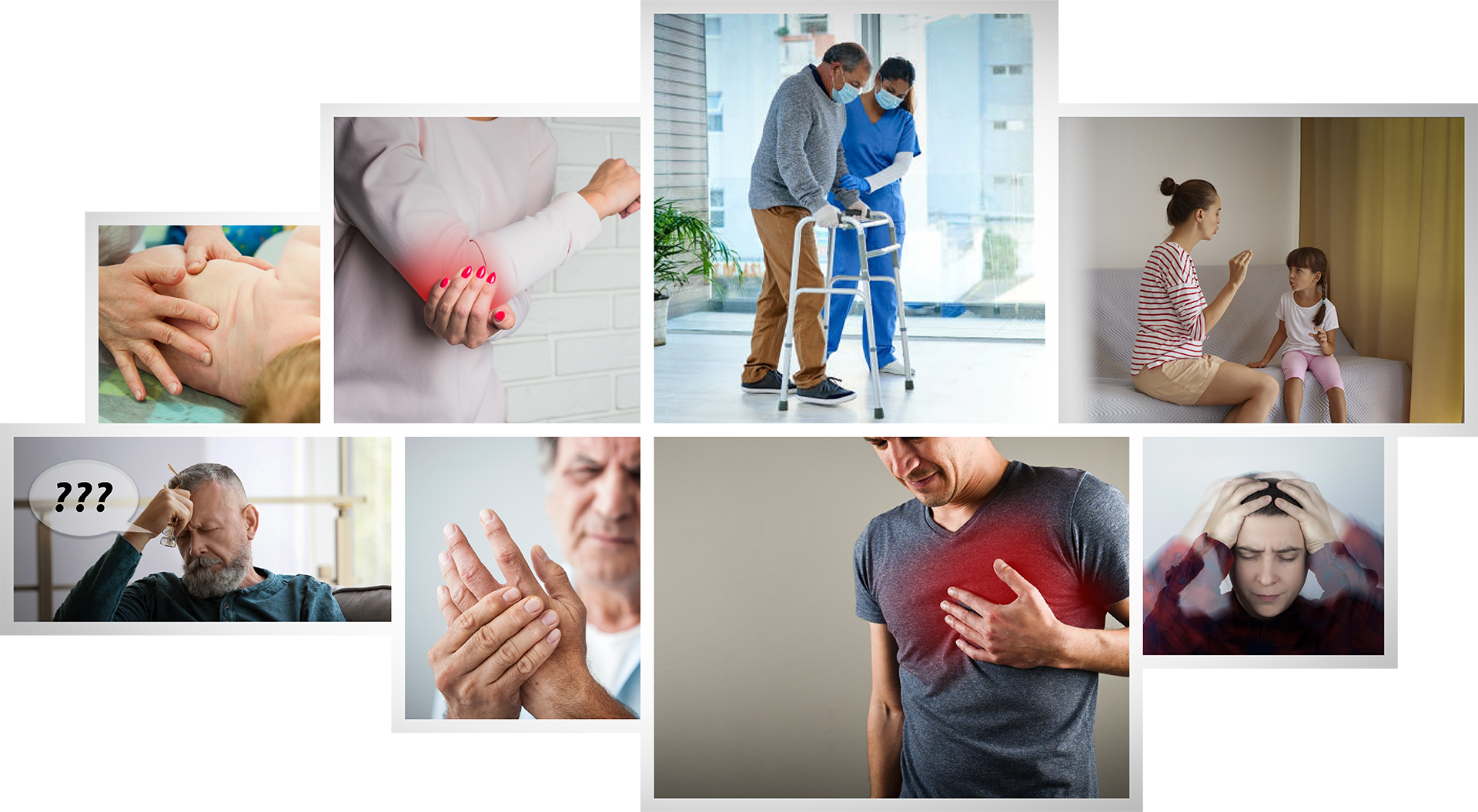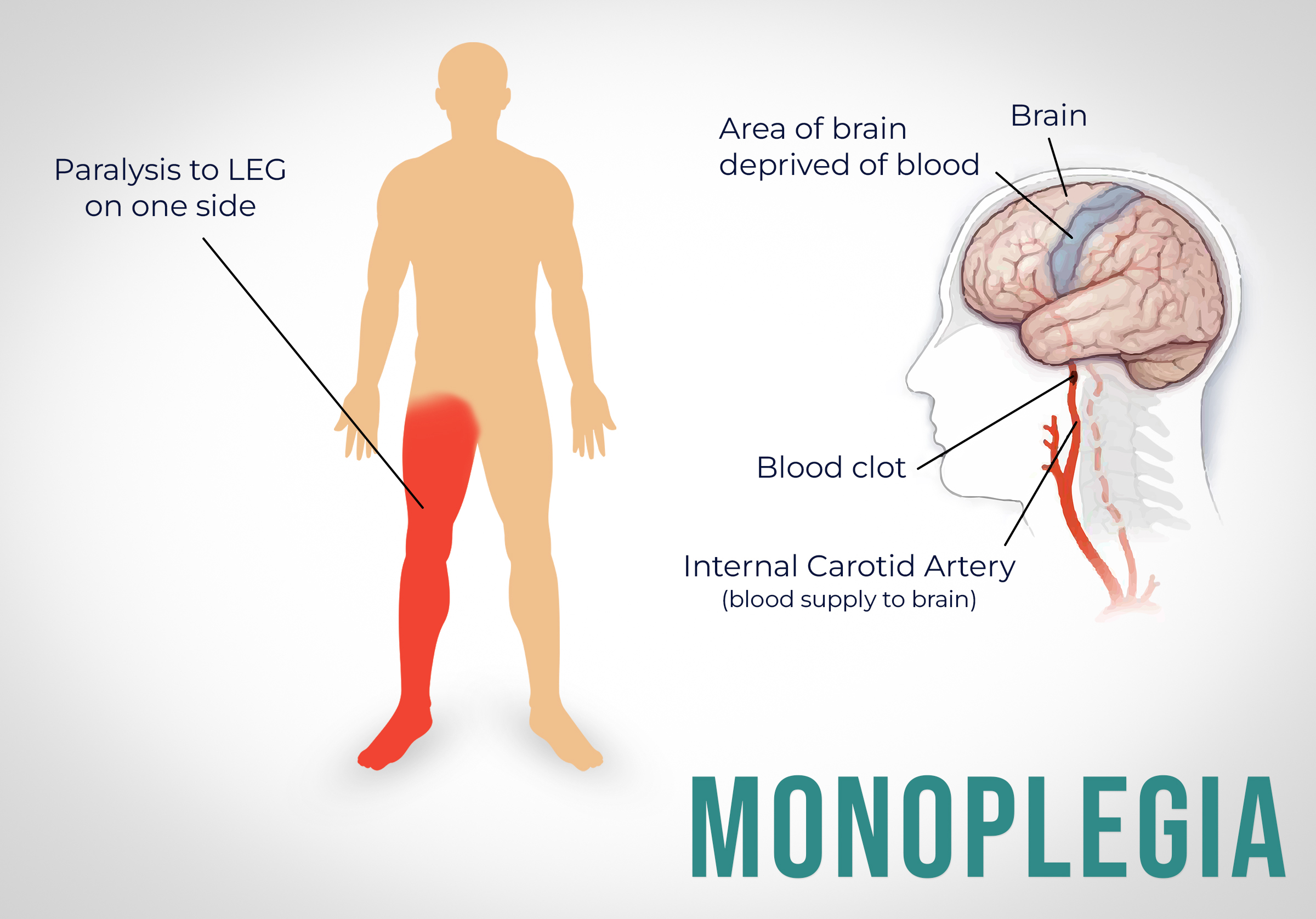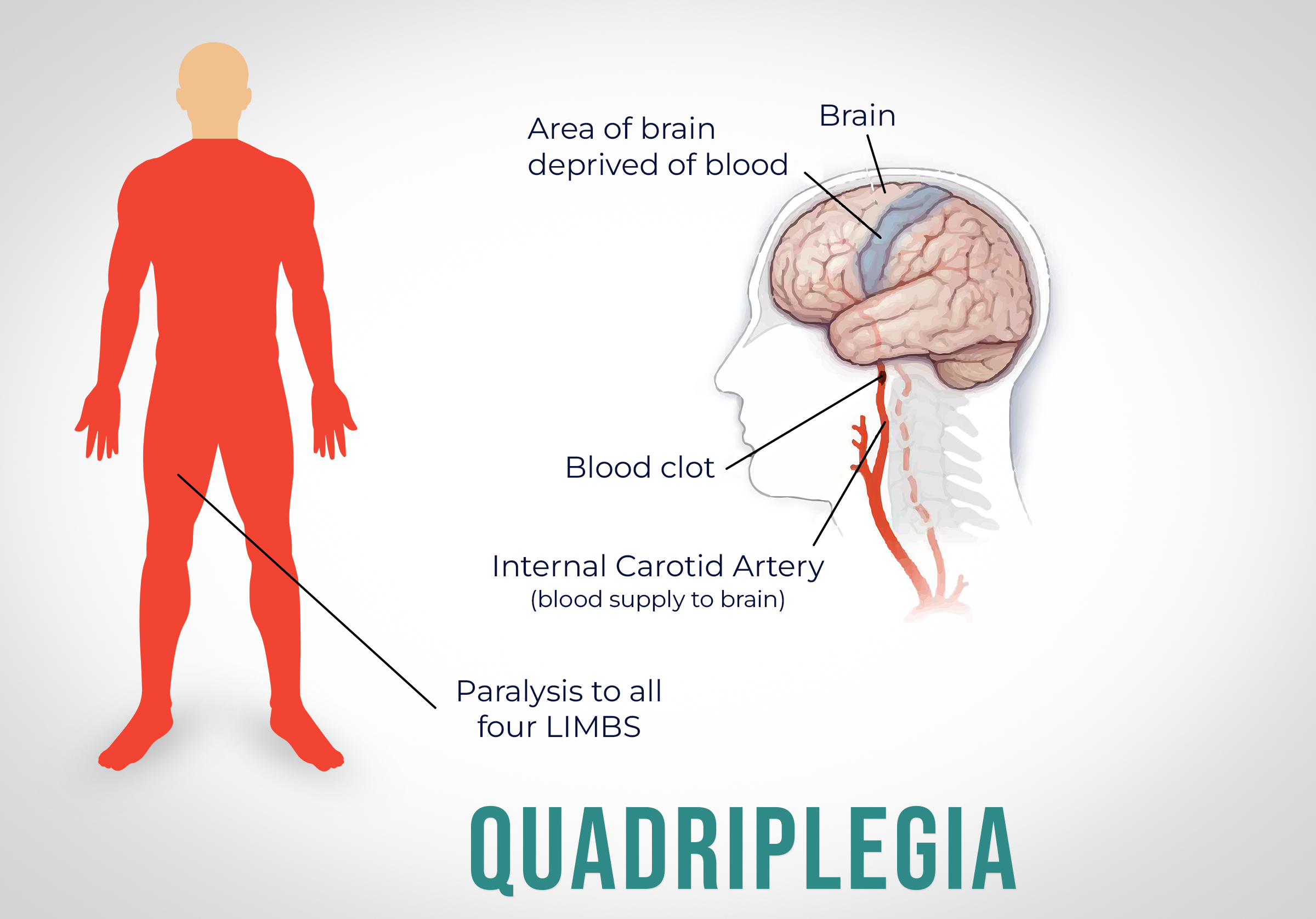Monoplegia
Monoplegia, linked with cerebral palsy, affects a single limb due to impaired brain control over specific muscles in some cases.
Loss of muscle function or mobility in one or a few area(s) of the body is called paralysis. Treatment options for paralysis can include early diagnosis, natural medical intervention, and several therapies for improved function and quality of life.

Paralysis occurs when one or more muscles lose their ability to contract, leading to weakness or loss of movement in the affected area. In some cases, sensory loss may also occur if both motor and sensory nerves are damaged.
The condition can affect either the whole body or specific parts. When the entire body is impacted, it is called complete paralysis, while limited impact on a specific area is referred to as partial paralysis.
A holistic and integrated approach to paralysis treatment focuses on improving nerve health, restoring muscle movement, and enhancing overall body coordination. Paralysis may result from factors such as multiple sclerosis, spinal cord or brain injuries, stroke, infections, or exposure to environmental toxins. Addressing these underlying causes through comprehensive care helps improve mobility and quality of life.
Over time many treatment methods have been explored for paralysis yet few have offered complete recovery. A holistic healing approach which combines the best of traditional and modern sciences focuses not just on managing symptoms but on restoring the body’s natural balance and strength.
In this perspective paralysis often linked to nerve damage stroke or imbalance in the body’s vital energies is treated by addressing the underlying cause not just the visible effects.
This integrated form of therapy works to rebuild nerve function improve body coordination and enhance overall vitality helping patients gradually regain control and mobility through personalized and balanced care.
Is there any indication, yet?

There are only four types of Paralysis that are most commonly seen across the globe, and they are all treatable with specialized Ayurvedic treatments. Despite their slight differences, they can be mixed up, and it is necessary to understand each of them.
Monoplegia, linked with cerebral palsy, affects a single limb due to impaired brain control over specific muscles in some cases.


Hemiplegia affects one body side, often limited to an arm and leg, while hemiparesis reduces limb strength but retains some function.
Paraplegia limits muscle control below the waist, varying in effects, often stemming from spinal cord or brain issues. Legs seem normal; Paralysis ranges from the lower torso to the entire body.


Quadriplegia renders all four limbs paralyzed due to disrupted signals between the brain and areas below the neck. Spinal cord involvement causes this condition.
Welcome to our trusted health and recovery center, known for its excellence in treating paralysis through a holistic approach. Here, patients receive 100% safe and natural care, supported by personalized diet plans and therapies designed by Dr. Puru Dhawan, a leading expert in the field. Every treatment plan is customized according to the patient’s specific condition, ensuring visible and steady improvement.
Our expert team focuses on restoring health naturally through a balanced combination of nutrition, physiotherapy, targeted exercises, and lifestyle guidance. Each step of the treatment is carefully monitored and adjusted for faster and sustainable recovery, with complete assurance of zero side effects.
Our approach goes beyond medication—it integrates external therapies, strength-building diets, and mindful living practices to help patients regain mobility and confidence. Patients and their families also have access to informative videos that explain recovery-friendly diets and exercises. Join us in this journey toward a healthier, stronger life through care that truly heals from within.